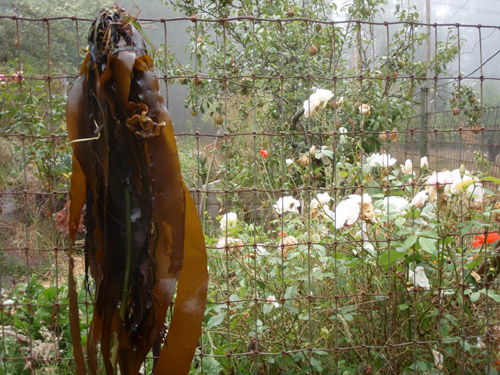
Freshly harvested kelp drying on the garden fence
For a while after the recent tsunami in Japan, Californians were aflutter about iodine, the primary antidote to radiation exposure. In researching sources of the element I discovered that the Japanese consume about five times more than most of the rest of the world, largely because seaweed and fresh fish figure so prominently in their daily diet. ???? ???? ??????? ??? ????? Interestingly, there is a strong correlation between the Japanese consumption of iodine with both their decreased rates of cancer and increased lifespan. ???? ????? ??????? I also learned that the production of the chemical element, iodine, was a cottage industry in Ireland and other coastal regions in the nineteenth century, where kelp was prevalent and abundant throughout the year.
Because our local beaches yield heaps of kelp, I’ve experimented over the past few years with using it as a material for making things, with varying degrees of success. I’m now more interested in kelp as a food source, and have been foraging the flat strands and drying them in the sun for cooking. Eventually, I’d like to make a batch of pure iodine as an experiment, perhaps as a way of staining/preserving wood. ???? ????? Historically, iodine has be extracted from kelp by reducing it to ash, boiling and filtering the ashes, and extracting the pure element by mixing it with hydrogen peroxide.
//